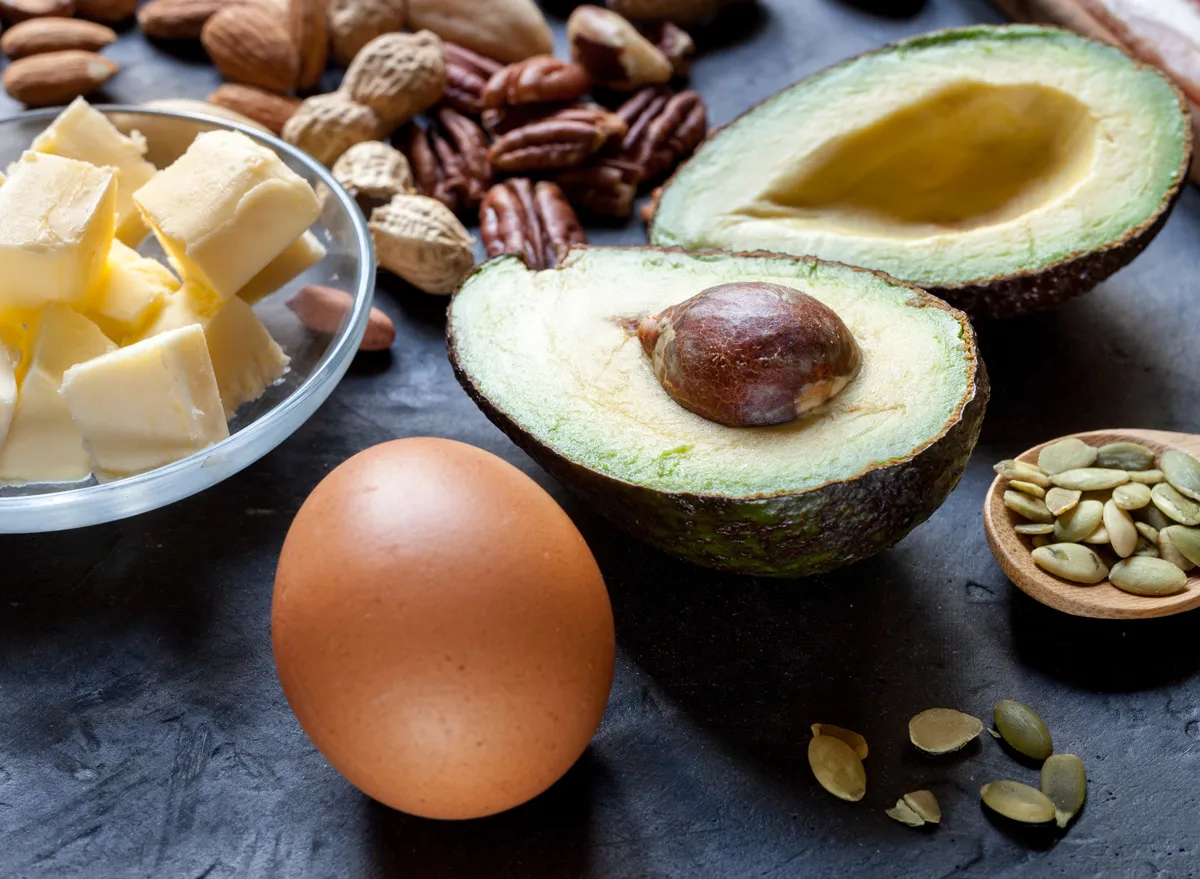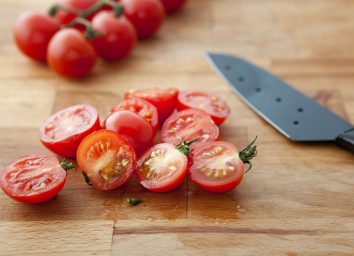Foods You Should Be Eating Every Day, According to the Mayo Clinic

If you’re looking to eat healthier throughout the day, one of the best resources you can turn to is the Mayo Clinic. Particularly the Mayo Clinic Diet, an eating plan developed to help people lose weight and maintain a healthy weight for a lifetime. According to their website, “The Mayo Clinic Diet teaches you how to estimate portion sizes and plan meals. The diet doesn’t require you to eliminate any foods.”
So what exactly does this diet entail? While the idea of going on a “diet” can cause many to bristle, this particular eating plan isn’t one to worry too much about. In fact, it’s incredibly easy to follow, and really doesn’t eliminate any of the foods you love!
The Mayo Clinic uses a food pyramid similar to the pyramid used in the USDA Dietary Guidelines years ago. However, their pyramid is set up differently compared to the pyramid we were all once used to. According to the Mayo Clinic, “the base of the Mayo Clinic Healthy Weight Pyramid focuses on generous amounts of healthy foods that contain a smaller number of calories in a large volume of food, particularly fruits and vegetables.”
How does it work? Here are the foods featured in the Mayo Clinic Healthy Weight Pyramid that you can try to incorporate into your meals. And if you need some healthy meal inspiration, check out our list of 100 Easiest Recipes You Can Make.
Fruits & Vegetables

At the bottom of the pyramid, you have three major components to focus on for your day—fruits, vegetables, and daily physical activity. According to the Mayo Clinic, a majority of your diet should come from produce like fruits and vegetables, which makes sense given that these foods are the richest in good nutrients for your body like vitamins and minerals. Eating a variety of fruits and vegetables means your body has a better chance of getting a variety of those vitamins and minerals throughout the day. An easy way to ensure that variety is to try and eat foods from all colors of the rainbow.
Here are 9 Warning Signs You’re Not Eating Enough Vegetables.
Carbohydrates

Next in the pyramid, you have your carbohydrates. Unlike the former USDA food pyramid where carbohydrates took the highest percentage of your diet (sitting at the bottom of the pyramid), the Mayo Clinic recommends making fruits and vegetables the biggest part of your diet instead. However, carbohydrates are still important for your body, especially whole grains that are full of fiber which helps with digestion and satiety throughout the day. Plus, fiber-rich foods help you to lose weight!
Here are 24 Best Healthy Carbs To Eat For Weight Loss.
Protein & Dairy

After carbohydrates, you have protein and dairy. The Mayo Clinic recommends looking for leaner sources of both of these. Some of the best lean sources of protein include legumes and fish (or even these Best Forms of Lean Protein You Can Eat), and they recommend low-fat dairy products. Yes, having a little milk fat is actually good for your diet! It can help you to feel fuller for longer and provides your body with an extra boost of calcium, vitamin D, and yes, even some extra protein.
Healthy fats

The next smaller part of the pyramid says “fats,” but what exactly does that mean? Does any fatty food count here? Not exactly. The Mayo Clinic recommends adding heart-healthy unsaturated fats into your meals such as olive oil, avocado, nuts, and even natural nut butter.
Sweets

That’s right, sweets are still part of the food pyramid—but just at the very tip of it. Having a small sweet every now and then (especially one of these 76 Best Healthy Dessert Recipes) is completely okay in someone’s diet. The key is to portion control your sweets and keep them within a certain calorie range—like indulging on one of these 25 Low-Calorie Desserts to Buy Under 150 Calories once in a while.
All in all, the Mayo Clinic says following this food pyramid is quite simple: “Eat most of your food from the groups at the base of the pyramid and less from the top—and move more.”
Fill each of your plates with the key elements recommended by the Mayo Clinic: Fruits and vegetables, whole-grain carbohydrates, and protein. And try to move your body! The Mayo Clinic Diet recommends moving your body for at least 30 minutes every day—and that doesn’t always mean hardcore exercise. Going for a walk, taking the stairs instead of the elevator, or other creative ways to get your body moving each day are perfectly fine. Or try one of these 25 Easy Exercises That Make You Feel Better.








